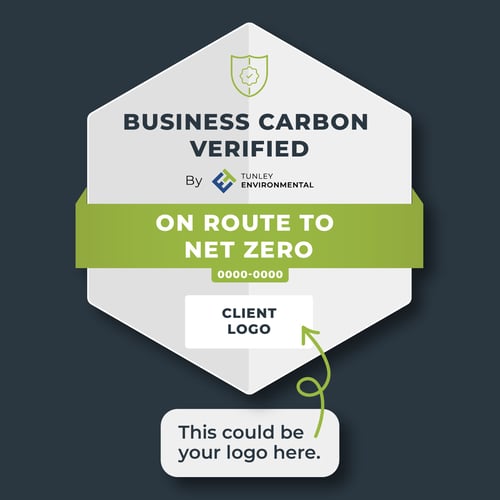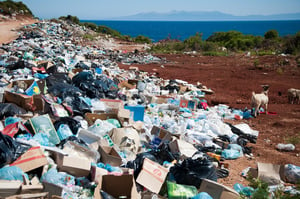SUSTAINABLE PACKAGING: MATERIAL SELECTION, CARBON REDUCTION, AND THE ROLE OF LEGISLATION IN FACILITATING A CIRCULAR ECONOMY WHITE PAPER
Carbon Reduction Scientists, Nathan Wood, Dr Aaron Yeardley, and Dr Torill Bigg have written our new white paper ‘Sustainable Packaging: Material Selection, Carbon Reduction, and the Role of Legislation’. Read the white paper below.
.jpg?width=300&name=Tunley%20Headshots%20(17).jpg)
.jpg?width=300&name=Tunley%20Headshots%20(15).jpg)
-1.jpg?width=300&name=Tunley%20Headshots%20(13)-1.jpg)
ABSTRACT
This white paper explores carbon reduction strategies, material selection, and the UK government’s environmental policies in relation to sustainable packaging. Carbon reduction initiatives aim to mitigate greenhouse gas emissions and address climate change by focusing on energy efficiency, renewable energy adoption, and material choices for packaging. Low-carbon or recycled materials are greener alternatives to traditional packaging. The UK government has introduced several environmental policies and regulations, including the microbead ban and restrictions on single-use plastic items. However, the government’s carbon conversion factors for recycling or incinerating plastic are higher than those for landfill disposal, highlighting the need for further analysis and policy adjustments. Ultimately, a combination of technological advancements, material selection, and effective policy frameworks are crucial for fostering a sustainable packaging industry and addressing pressing environmental concerns.
INTRODUCTION
The impact of humans on the environment has a long and complex history, that spans from the emergence of stone tools to the present day. Throughout this period, humans have modified their surroundings to enhance their standard of living but have also caused various environmental problems. Some of these problems, such as soil erosion and pollution were recognised by ancient civilisations [1], while others, such as anthropogenic climate change and biodiversity loss, have become more evident in recent decades [2]. The understanding of the impact of humans on the environment has evolved over time, from the classical views of Plato, Galen, and Hippocrates [1], to the modern perspectives of Leopold,
Carson, and others [2]. Leopold’s philosophy of environmental ethics proposed that humans should adopt a land ethic that respects the integrity and stability of the natural environment, which influenced many environmental movements in the 20th and 21st centuries [2].
Driven by cultural change, the 1960s and 2000s were marked by an increase in environmental awareness and activism across many western countries [2]. This played a role in influencing the development of environmental policies in the United States, such as the Clean Air Act of 1963 [3] and the Water Quality Act of 1965 [4]. In the 21st century, the United Kingdom responded to increased environmental awareness by adopting policies to address climate change, such as the Climate Change Act of 2008 [5], which set legally binding targets of reducing greenhouse gas emissions by 80% by 2050. The UK also joined international agreements on climate change, such as the Kyoto Protocol and the Paris Agreement [6].
In the modern world, resource and environmental sustainability are pressing issues. The urgency to act on sustainability has been emphasised by intergovernmental panels such as the United Nations (UN) [7]. The definition of sustainability can vary depending upon one’s viewpoint; nonetheless, it is essential to focus on its most fundamental and straightforward definition. Sustainability can be defined as the practice of using natural resources responsibly today, so they are available for future generations tomorrow [8]. Putting sustainability into practice is not a simple task, as it involves a number of interrelated considerations – not only avoiding the causes of climate change, but also considering – people and the environment, extraction, disposal, and use of resources [9].
Natural resources can be categorised according to their risk of depletion e.g., whether they are renewable or non-renewable. Renewable resources, such as trees and plants, can regenerate naturally. Whereas, non-renewable resources, such as metals and oil, are finite in the Earth’s crust or take millions of years to regenerate [10]. Natural resources are interconnected to the Earth’s complex ecosystems. The complexity of sustainability is reflected in The United Nations Sustainable Development Goals (UNSDGs). The 17 UNSDGs, summarised as people, planet, prosperity, peace, and partnership, outline the various interrelated aspects of sustainability with specific reference to sustainable development. Sustainability, therefore, requires a balance of meeting the resources required by the needs of humans today, while preserving enough for tomorrow. All without disrupting our vital ecosystems through adverse consequences such as global warming, air pollution and freshwater salination.
In recent years, sustainable practices across various sectors have garnered considerable attention, with the manufacturing and packaging industries no exception. The packaging industry plays a critical role in the global economy and has considerable environmental impacts. The move towards sustainable packaging involves a multifaceted approach, including material selection, carbon reduction, and the implementation of effective government policies to promote a circular economy. This paper aims to provide an overview of the main themes and challenges in packaging and recyclability and discusses how they relate to current environmental issues and policies.



